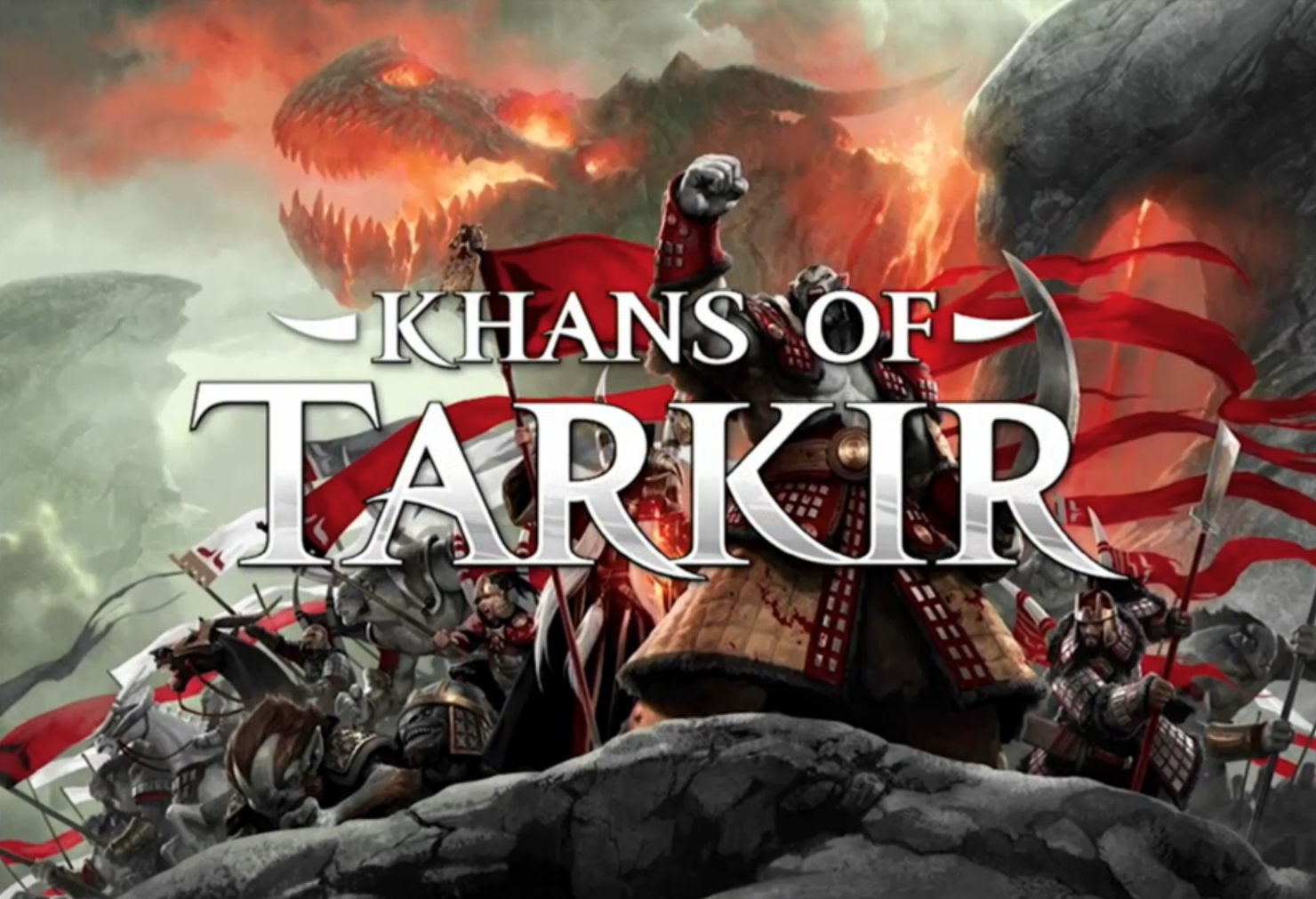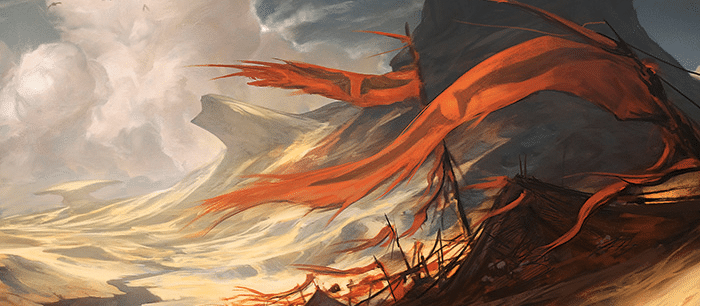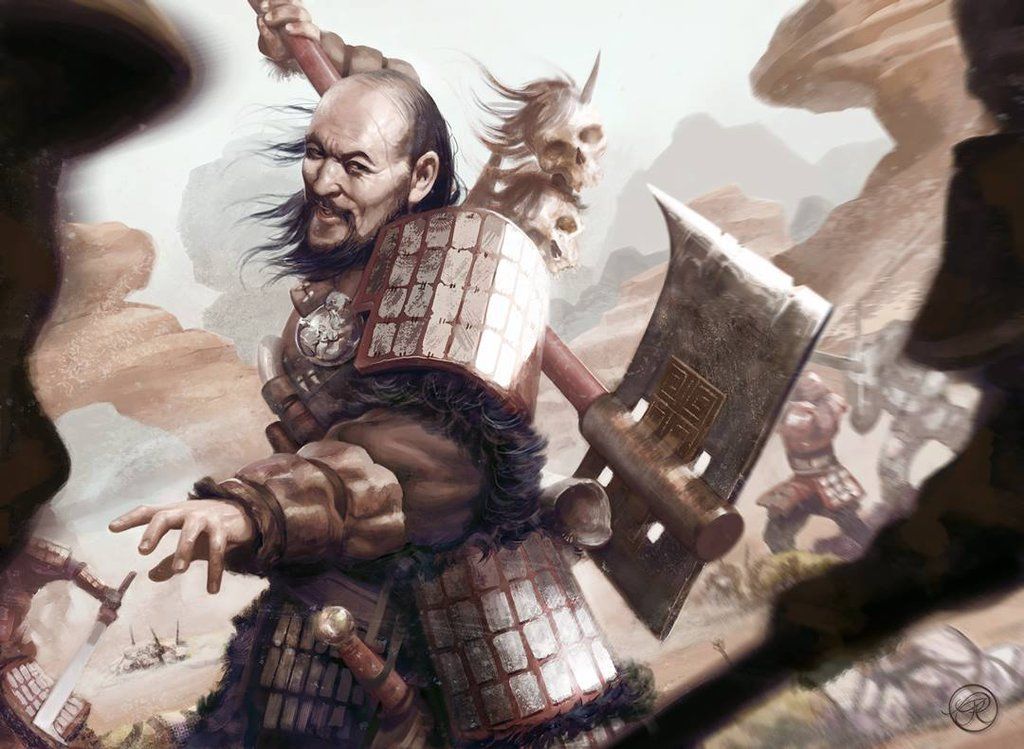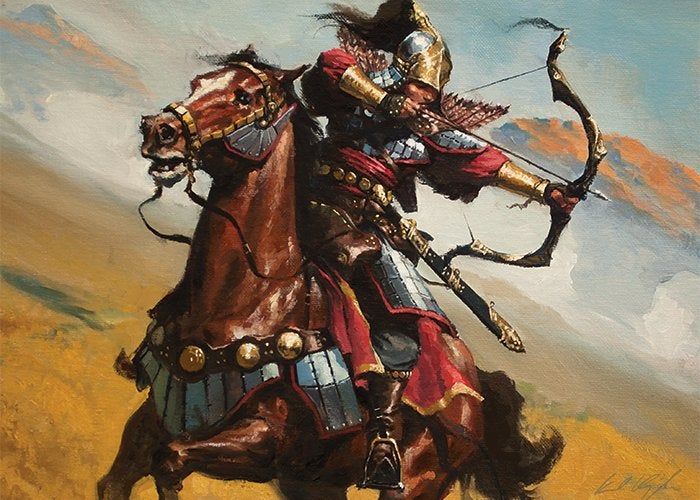MTG Flavor Bible: Khans of Tarkir

Magic: The Gathering is a game rich with complexity, interaction, and flavor. Every new set brings about heavy discussion around cards, power levels, new mechanics, and even art. With the release of Ikoria Lair of Behemoths, I thought now would be the perfect time to discuss my favorite part of new sets: worldbuilding. This is actually going to be a monthly series I write for Cardsphere where I dive into the flavor of planes. While the actual world itself may be the last thing on most people’s minds, it's always been a joy for me to evaluate it. This is especially true when a plane’s theme is pulling from real world history or cultures.
Before I begin, let me include some disclaimers. First, I am aware that Magic is a fantasy card game, therefore, everything depicted is not meant to be 100% accurate to the source material. However, for a lot of us, Magic and other entertainment sources are our primary introduction to new cultures and ideas. It may even be our only point of contact. So I believe that Wizards does have a responsibility, just like anyone or any corporation who chooses to borrow from another culture/source, to treat its source material with respect and represent it well. It is certainly a daunting task. Not only does Wizards have to consider how to make a plane flavorful and unique, but also whether or not the references to the source material will resonate with Magic players at large. Compare the reception to Innistrad versus Theros block, and maybe you’ll have a better grasp at what I mean. But this article isn’t about critiquing where they go wrong, but looking at some of my favorite sets and highlighting where I think they went right.
The second disclaimer is that I am not evaluating any set's flavor based on the lore from the set. I know there are a lot of Vorthos lovers (and haters) out there, but I made this decision on the pure basis of fairness. To be honest, the quality of the lore from Wizards has been inconsistent to say the least. And it would be unfortunate to ding a plane over its storyline when all other aspects do very well. Also, not everyone reads and is familiar with MTG lore, so I'd rather focus on what we all see and take in. For that reason, while I may discuss flavor text, I won't dive into the story.
Finally, I do not claim to be a cultural or historical expert in any of the things I talk about. I will do my best to be thorough and accurate as possible. I am also happy to hear any input about things I missed or misinterpreted from those who would know more than me.
All that said, lets jump into the world of Tarkir!
The Flavor of Tarkir
Khans of Tarkir is a block that holds a lot of nostalgia for me. It’s when I first started playing Standard and my first draft experience (and what a roller coaster of learning that was). It’s also a set that does a great job of pulling from real world cultures and artfully presenting them. Although Wizards did say that Khans was not a "top-down" Asia set, it was very much influenced by various Asian cultures and history.
Let's first start with the concept of the warring clans. I was immediately reminded of The Warring States period of China, where various states fought for over a hundred years until the Qin dynasty conquered them all. Japan’s Sengoku period was also an era that lasted over a hundred years of civil war between states before it began to unify. It was really interesting to see a similar history present in Khans.
Perhaps my favorite thing about Khans is the way that multiple Asian cultures are represented in the set. For many unfamiliar Americans (speaking as someone who was unfamiliar with Asian cultures), when we think of Asia, there is only the faintest familiarity with China, Japan, and more recently Korea. So basically Kung fu, sushi, anime, and that scary guy that looks like a potato with a bowl cut. However, instead of creating something based on homogenized and whitewashed ideas of what Asia is like, Wizards worked hard to show its diversity.
The Jeskai

The Jeskai very clearly remind me of the Wuxia and Xianxia genres from Chinese film and novels. Wuxia in particular focuses on heroes who are motivated to right wrongs, fight for righteousness, and uphold order. Present in Xianxia is the idea of mental and spiritual cultivation that lead a person to obtaining greater enlightenment and power. These ideas seem to resonate within the Jeskai as well.

"When asked how many paths reach enlightenment, the monk kicked a heap of sand. 'Count,' he smiled, 'and then find more grains.'" - Flavor text of Mystic Monastery
During the Worldbuilding Panel at PAX, which featured members of the Khans of Tarkir creative team, Ari Levitch, noted that for the Jeskai, they were able to play into a lot of the Kung Fu tropes and different fighting styles but also got to "layer Magic on top of that." And I think they did this very well.
Visually speaking, the scenes from Jeskai cards often remind me of Xianxia characters and the fantastical depictions of heaven

Narset, Enlightened Master herself seems pulled directly from one of these fantastical films.
The outfits worn by the members also seem to pull strongly from these genres and other aspects of Chinese culture.

Also, the inclusion of the Efreet in Tarkir was an especially nice touch. The Efreet are based off of the Ifrit, a mystical creature from Arabic lore. For those of you who are unaware, yes, the Middle East is technically part of Asia. Mind blowing, but very true, and makes a lot of sense once you realize how much of Asia was influenced by the Middle East and vice versa.
The Mardu

The Mardu horde is a nomadic tribe committed to the glory of battle and conquest, much like the Mongols of old. Even the leader of the Horde is called the Khan, presumably named after Genghis Khan.
The Mardu honor battle and freedom, shirking the protection of the city walls for the great blue sky.

Much like the Jeskai, the Mardu also look similar to their source material in terms of armor, weaponry, and appearance (besides the goblins and orcs of course).

Besides the Mongols, the Mardu also are noted for fighting on horseback. This is a commonality of the Hun race. The Huns are believed to be somewhere from either China or maybe Kazahkstan. Regardless, they were a nomadic, hunter-gatherer tribe who are famously known for terrorizing both Europe and China and often fought on horseback.

It was really sweet to see the influences from two famous warrior Asian cultures present in the Mardu.
The Temur

No doubt, the Temur were the most difficult to really determine exact flavor. The Temur seem to be nomadic, as the Mardu are. I do like the hints at mysticism present in the Temur clan as it is something I particularly associate with relatively nomadic and ancient cultures.
The Abzan

One of the more difficult clans to pin down the original inspiration, I find the Abzan to pull from Chinese, Turkish, Persian culture.
Some flavor text of the Abzan references "the Salt road," a clear reference to the Silk Road if I've ever seen one. The Silk Road was trade network which connected China and other parts of Asia to the West, including through the Middle East, Turkey, and Europe. The Abzan put a high priority on supplies and preparation, and would certainly have a trade route to manage. One of favorite flavor texts of the Abzan is "Soldiers win battles, but supplies win wars."
Often in Abzan art, there is the depiction of its great fortress, Mer-Ek, a city surrounded by a seemingly impenetrable wall.

Walled cities can historically be found in many countries. Pingyao, China is one of the more notable walled cities remaining in China. Northern Africa, the Middle East, and Turkey also have similar cities as well. However, if you look in the background of this picture, you'll see the familiar dome shapes that can be found throughout Turkey, other parts of the Middle East and other areas where the cultures there have left their mark. Many of these places served multiple purposes, palaces and fortresses and places of worship all bound together behind formidable walls.

This is an image of Naqsh-e Jahan Square. Built in the late 1500s and early 1600s in Iran. I found this image while researching Persian architecture, which influenced European, North African, and parts of Asia. I could easily imagine this square in the middle of Mer-Ek.
The Sultai

No doubt my favorite clan from Khans, the Sultai include great references to South and Southeast Asian cultures, especially when you look at the creatures and decadence presence in the artwork.
Rakshasas are man-eating demonic beings originating from Hindu mythology. One can find records of them in India, Cambodia, and other parts of southeastern Asia. They have been depicted as powerful warriors, magicians, and illusionists.

Nagas are also referenced in similar mythology and cultures as the rakshasas. They are depicted usually as a human with snakes head, vice versa, or even hooded cobras with multiple heads like Hooded Hydra. The Nagas are also said to be guardians of treasures and have an opulent underground kingdom.

Speaking of opulence, the Sultai inhabit decadent palaces within the jungles of Tarkir. The architecture is reminiscent of Southeast Asian temples and palaces.

One of my favorite cards from this block is Tasigur, the Golden Fang. His artwork more than subtly hints at the wealth and vicious beauty of the Sultai.
Takeaways
There is a difficult conversation when it comes from pulling from source material and creating something new when it comes to art and entertainment. How does any person or organization appropriately borrow from other cultures or history? Unfortunately, this different for everyone, and I don't have the perfect answer. However, these are the questions I try to ask myself:
- Is it relying solely on stereotypes or inaccurate/one sided material?
- Is the source material being appropriated without acknowledging its origins and rebranded as something "new"?
- Are people involved in the creation of this new material that are from said culture?
- Is the representation harmful to the understanding of people who are not in that culture, and therefore would not know there is nuance?
The fourth question is perhaps the most difficult to understand and easy to dismiss. Essentially, repeated representations of a group of people or a culture as one thing can be harmful. Think the proliferation of gang movies, or even worse, movies about slavery. It's basically been the only primary media about African Americans out there for a long time. Narrowing an entire people's history into one or maybe two different types of stories is dangerous. Over time it transmits harmful stereotypes as fact. Imagine if the only story ever told about a white man is that time he shot up a high school. See? Harmful.
If you would like to educate yourself some more on the nuance of this, may I direct you this excellent Ted Talk.
Looking at the world of Tarkir, I think Wizards did a really great job pulling from Asian cultures and creating something exciting and rich for people to enjoy on multiple levels. The fact that they looked at multiple cultures is huge. They are clearly not trying to pass off Tarkir world as something uninspired by the real world. Too many references to even try! Besides that, Colin Kawakami was the Creative Manager for R&D at the time.
Doug Beyer, the senior creative designer at the time, also answered a question in regards to how they try and handle sets anytime they step outside of the Western/European realm, and answered "We do our homework... We love to use the real world as inspiration...vWe always want to make sure that we are representing cultures sensitively. We look into how the culture represents itself. We talk to people. We do our due diligence to make sure we are not treading on ground that is reverent or sacred to that culture."
I think the representations they are showing aren't done in a harmful way. There is good and bad in all the clans of Tarkir, and Wizards does an excellent job of giving admirable qualities to all of them. The world of Tarkir is a 10/10 in my flavor bible.
How about yours?
